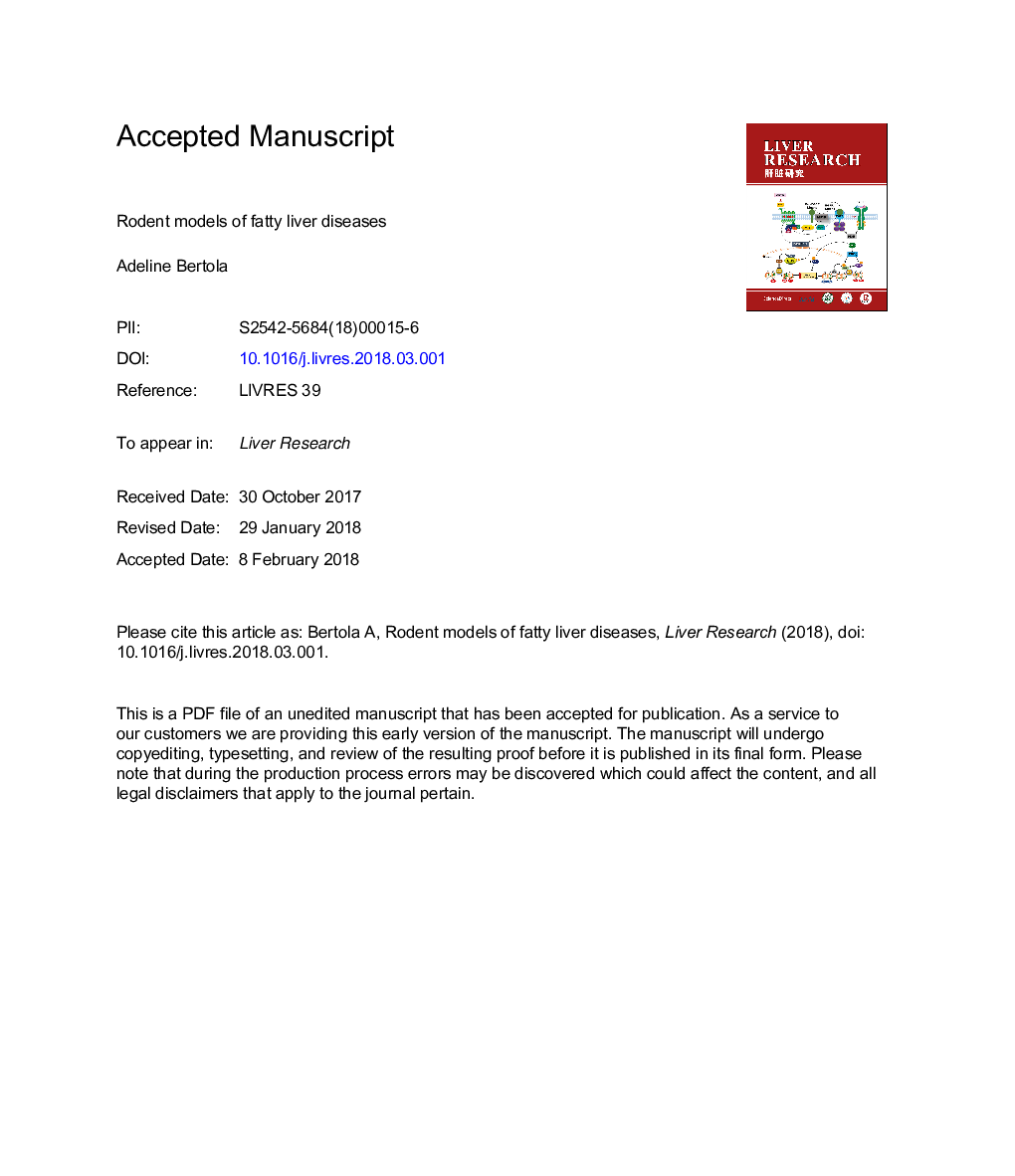| Article ID | Journal | Published Year | Pages | File Type |
|---|---|---|---|---|
| 8925915 | Liver Research | 2018 | 38 Pages |
Abstract
Fatty liver diseases including alcoholic liver disease (ALD) and non-alcoholic fatty liver disease (NAFLD) are leading causes of chronic liver diseases worldwide. ALD and NAFLD encompass a broad spectrum of liver disorders ranging from simple steatosis to steatohepatitis, fibrosis, cirrhosis and superimposed hepatocellular carcinoma. Despite considerable advances in our understanding of the pathogenesis of fatty liver diseases over the past 40 years, effective diagnostic, prognostic, and therapeutic tools are still lacking. The use of animal models is crucial to investigate the cellular and molecular mechanisms underlying the development and progression of fatty liver diseases and develop novel therapeutic strategies. Although no animal model to date can faithfully replicate all the clinical and histological features of ALD or NAFLD, existing models can mimic specific aspects of human diseases. This review provides an overview of the most commonly used and recently developed rodent models of ALD and NAFLD and discusses their major strengths and shortcomings.
Keywords
Related Topics
Health Sciences
Medicine and Dentistry
Hepatology
Authors
Adeline Bertola,
